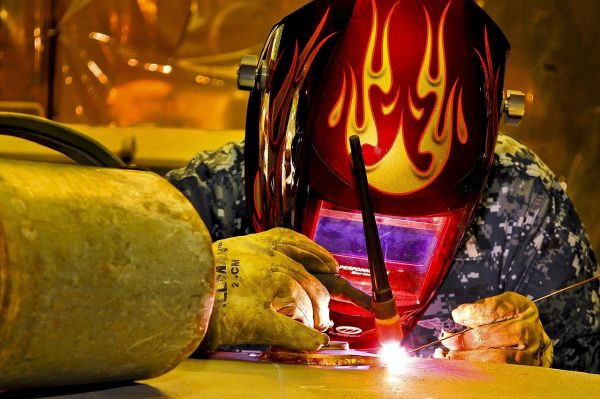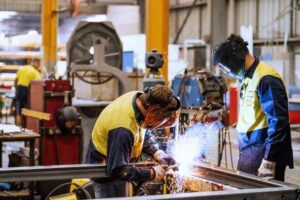Everybody’s, Somebody’s, Anybody’s or Nobody’s?
There are four people named: Everybody, Somebody, Anybody and Nobody.
There was an important job to be done and Everybody was sure that Somebody would do it.
Anybody could have done it, but Nobody did it.
Somebody got angry about that, because it was Everybody’s job.
Everybody thought Anybody could do it, but Nobody realized that Everybody wouldn’t do it.
It ended up that Everybody blamed Somebody when Nobody did what Anybody could have.
-Author Unknown
There is an opportunity for both businesses and individuals to thrive in a competitive global economy by cross training employees.
Internal cross-training is not necessarily a new concept, but businesses that can successfully create a skilled, mobile, and immediately available workforce can react favorably to rapidly changing customer demands.
This concept especially applies to small businesses because it allows employees to easily transfer to other needed positions outside of their normal skill-set(s) when needed, and can positively affect workflow and productivity. Many businesses cannot afford to be overstaffed; more importantly, they cannot afford to be understaffed without implementing a cross-training program either.
In general, cross-training employees allows businesses to utilize a lean manufacturing process with human resources (i.e. employees).
Some employers may find resistance by a few employees who are asked to share their job knowledge with co-workers.
These employees may present a negative or hostile attitude toward the subject, but it can often just be a reaction of common objections such as fear. For example, they may believe that if their co-worker(s) learns their “job secrets,” it can make them more vulnerable to future layoffs, etc.
The reality in these cases is that these same employees could individually benefit by being a team player while gaining a better sense of job security. How? Employers usually know who their major contributors are, and the opportunity to shine for an individual employee is a golden one if they choose to have a positive attitude, embrace change, and take a lead role in helping to cross-train others.

When financial times are challenging, do you think employers would rather have a superstar employee who works independently on their own tasks at all times or a superstar employee who also makes continuous efforts to help create more superstar employees around them?
Opportunity is knocking – it’s up to each individual to choose if they want to hear it and act on it. Employees who are willing to learn new skills and embrace new job duties can add more value to their professional careers. Also, many employees have reported that they have experienced personal growth and satisfaction by becoming a mentor / trainer to others as a result of witnessing their trainee(s) grow and prosper.

Six Benefits of Cross-Training Employees
1.) Flexibility; creates an employee base that can quickly adapt to the ever-changing needs of customers. For example, many manufacturing companies cross-train employees so that multiple members of their production team can do more than one task, operate more than one machine, transfer from one department to another (e.g. welding department to assembly department, etc.) when needed.

2.) Standardization; businesses can create policies and procedures to describe how specific job duties are performed in a variety of areas. An example would be a metal manufacturing company (e.g. laser cutting, forming, welding, paint, assembly, etc.). Cross-training provides the opportunity to ensure that all employees are following approved documented guidelines for manufacturing products.
Quality is always a given of manufacturing plants, and the more streamlined internal processes can be, the more likely quality will remain at an acceptable level (assuming checks and balances are in place to monitor that these processes are followed correctly and consistently).

3.) Improved Efficiency; employees who internally cross-train other employees have to analytically think about the action steps in the job duties at hand (an excellent refresher course for them). Also, new trainees tend to ask good questions that can ultimately help in changing or even improving policies and/or procedures (oftentimes because they have fresh perspectives and/or ideas to improve upon an antiquated/outdated process).
In our manufacturing example, employees can also learn how quickly to expect a product to flow toward their workspace, and they can be prepared to complete their job duties in a timely manner knowing that they cannot afford to get behind (or they will be responsible for holding up an entire assembly line).
4.) Knowledge Gain & Job Security; cross-training employees is an excellent way for knowledge to be shared. Specific knowledge critical to businesses is not “lost” if a successful cross-training program is in place. Customer demands can be continued to be taken care of without delay (due to having other employees available to “fill-in” and bridge the needed skills gaps).
5.) Improved Teamwork; relationships among employees and departments are an important aspect of a healthy work environment. Cross-training can reveal different perspectives of employees, and a greater understanding (and hopefully appreciation) regarding their co-workers’ job duties. Employees are more likely to be able to see “the big picture” by internally cross-training in a variety of different jobs and/or departments.
6.) Improved Morale; some jobs can be monotonous. Internal cross-training allows employees to break up regular routines and learn new skills. The result is often increased motivation and improved morale.
-Kevin Keagy, Human Resources & Marketing Manager




